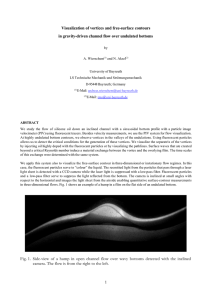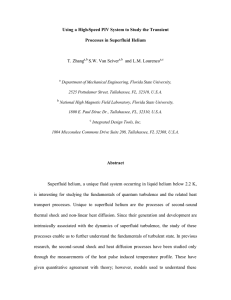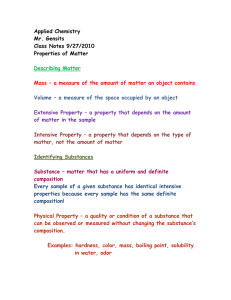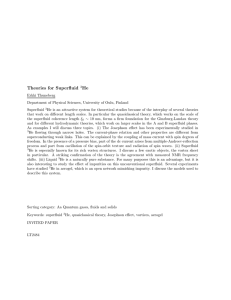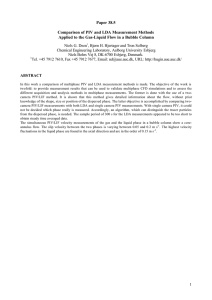Trajectories of Inertial Particles in a Turbulent Superfluid
advertisement
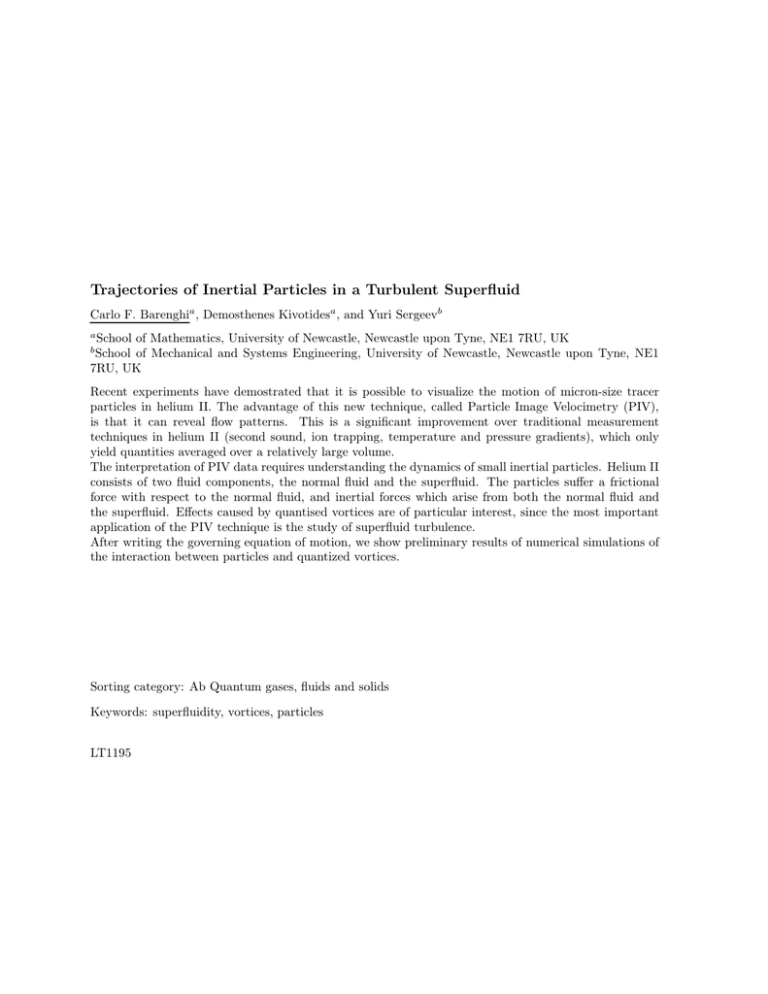
Trajectories of Inertial Particles in a Turbulent Superfluid Carlo F. Barenghia , Demosthenes Kivotidesa , and Yuri Sergeevb a School of Mathematics, University of Newcastle, Newcastle upon Tyne, NE1 7RU, UK School of Mechanical and Systems Engineering, University of Newcastle, Newcastle upon Tyne, NE1 7RU, UK b Recent experiments have demostrated that it is possible to visualize the motion of micron-size tracer particles in helium II. The advantage of this new technique, called Particle Image Velocimetry (PIV), is that it can reveal flow patterns. This is a significant improvement over traditional measurement techniques in helium II (second sound, ion trapping, temperature and pressure gradients), which only yield quantities averaged over a relatively large volume. The interpretation of PIV data requires understanding the dynamics of small inertial particles. Helium II consists of two fluid components, the normal fluid and the superfluid. The particles suffer a frictional force with respect to the normal fluid, and inertial forces which arise from both the normal fluid and the superfluid. Effects caused by quantised vortices are of particular interest, since the most important application of the PIV technique is the study of superfluid turbulence. After writing the governing equation of motion, we show preliminary results of numerical simulations of the interaction between particles and quantized vortices. Sorting category: Ab Quantum gases, fluids and solids Keywords: superfluidity, vortices, particles LT1195
